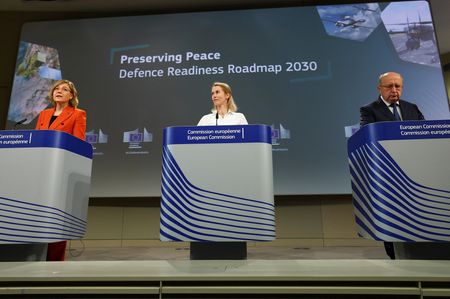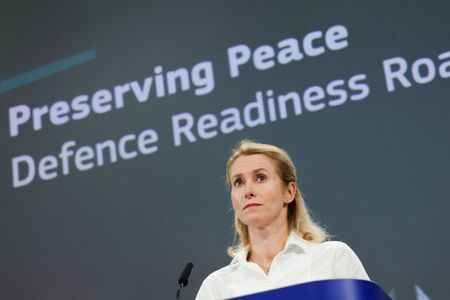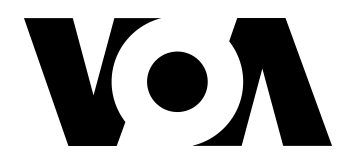By Andrew Gray and Lili Bayer
BRUSSELS (Reuters) -The European Commission on Thursday proposed four flagship European defence projects, including a counter-drone system and a plan to fortify the eastern border, as part of a drive to get the continent ready to defend itself by 2030.
The proposals, in a defence policy "roadmap", reflect fears fuelled by the war in Ukraine that Russia may attack an EU member in the coming years, and calls by U.S. President Donald Trump for Europe to do more for its own security.
"Danger will not disappear even when the war in Ukraine ends. It is clear we need to toughen our defences against Russia," European Union foreign policy chief Kaja Kallas told a press conference.
FORTIFYING EU'S EASTERN BORDERS
The Commission said two "flagships" were particularly urgent - the European Drone Defence Initiative, previously known as the "drone wall", and Eastern Flank Watch, which aims to "fortify the EU's Eastern borders across land, air and sea".
The Commission, the European Union's executive body, said both projects should have initial capacity by the end of next year. The drone project should be fully functional a year later and "flank watch" should reach that status at the end of 2028.
It also proposed a European Air Shield, to defend against missiles and other airborne threats, and a European Space Shield, to protect European space assets and services.
Leaders of the EU's 27 member governments will decide whether to endorse the flagship proposals and to agree on who runs projects that get the green light.
Ukrainian Defence Minister Denys Shmyhal praised the plans as "a turning point in Europe's security thinking -- a plan to preserve peace through strength."
Writing on X, Shmyhal said Ukraine's military was "now an integral part of Europe's collective security."
TEST OF EU DEFENCE AMBITIONS
The flagships represent a test of the EU's ambitions to play a greater role in Europe's defence – traditionally the preserve of national governments and the NATO military alliance.
Commission officials said the proposals were based on NATO's own capability targets and that EU governments would be in the driving seat for managing the projects.
European Defence Commissioner Andrius Kubilius called the roadmap a "mega-plan for delivery, with clear timetables, goals and reporting obligations".
"That is why we can call today a delivery day - or a D-Day for delivery," he said.
The Commission did not put a price on the projects.
Kubilius said EU members would first have to agree on details of the projects before the costs could be estimated.
He said EU countries could use national defence budgets, which have been rising rapidly in recent years, and funds such as the EU's 150 billion euro ($174.8 billion) SAFE loans scheme for defence projects, launched this year.
($1 = 0.8580 euros)
(Reporting by Andrew Gray and Lili Bayer; Editing by GV De Clercq and Alex Richardson)









